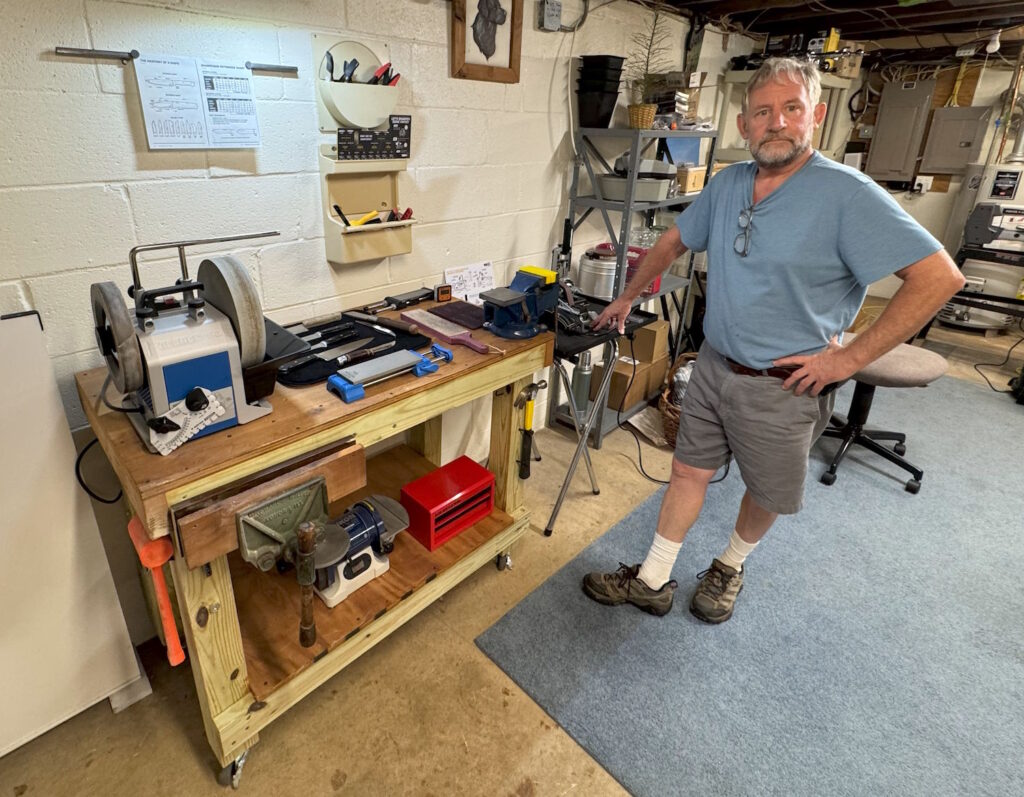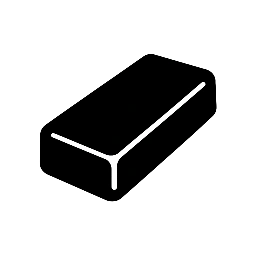Expert Blade Sharpening Tailored to Your Tools
At Broadbelt Blades, we hand-sharpen your kitchen, hunting, and gardening tools with unmatched precision, ensuring they perform like new. Trust us to keep your blades razor-sharp and ready for every task.
Choosing a Knife-Sharpening Service: What Informed Customers Should Know



Precision Blade Sharpening You Can Trust
At Broadbelt Blades, our mission is to deliver meticulous blade sharpening services that extend the life and performance of your knives and tools. Rooted in Malvern, PA, we value craftsmanship, reliability, and personalized care, ensuring every client receives exceptional attention and expert results.

Pricing
Knives
| Kitchen | $1.25/inch |
| Cleavers | $1.50/inch |
| Serrated | $1.75/inch |
| Hunting | $1.50/inch |
| Polishing | $10 and Up |
| Pizza Cutters | $7.00 |
| Pocket Knives | $6.00 |
| Tip & Edge Repair | $4.00 |
Tools
| Axes & Hatchets | $1.65/inch |
| Pruners & Loppers | $10.00 |
| Chain saw chains | $.60/inch (Bar Length) |
| Lawn mower blades | $11.00 |
| Wood Chisels – flat | $9.00 |
| Wood turning tools | $12.00 |
| Manual Hedge trimmers | $14.00 |
| Manual planer blades | $4.00 |
Instructions
Items to be sharpened should be safely placed in a strong cardboard box for transporting. It is recommended that blades be wrapped in heavy paper for safety purposes, but is not necessary. Your contact information should be placed on or in the box along with any special instructions.
Items to be sharpened can be dropped off to Broadbelt Blades at 4 Birch Road, Malvern, PA. Please call 610-476-9443 to make sure we are there to take your items.
If you would like for us to pick up and deliver back to you after sharpening, there is a charge of $1.00 per mile both ways. For example, if you are located 5 miles away, the total charge for pick and delivery will be $10.00.
Sharpening can be done at your location as well. The mobilization charge will be for just one direction to get to your location. Example: If you are 6 miles away, the charge to come and sharpen at your site would be $6.00.
Contact Us
Easily get a personalized quote for blade sharpening with clear steps and prompt assistance.

Choosing a Knife-Sharpening Service: What Informed Customers Should Know
A sharp kitchen knife is safer, more precise, and a pleasure to use, but only when the edge is created correctly. Professional sharpening should restore the factory geometry (or improve on it) and remove no more steel than necessary. Unfortunately, some services rely on high-speed grinders or “one-size-fits-all” pull-through machines that can shorten your knife’s life or permanently damage the steel. The notes below explain why that happens, highlight the most common pitfalls, and show how a skilled sharpener avoids them.
Five common mistakes—and the professional fixes
| Typical error | Why it hurts your knives | How skilled sharpeners prevent it | Key take-away |
| 1 · Overheating the edge | A thin edge heats in seconds; once it exceeds ~220 °C, or 428 Fahrenheit, the hardened steel begins to lose temper, turning softer or even blue-gray. You may not see the color change on a powered belt, but the damage is done. | Uses water-cooled or very low-RPM wheels, constant quenching, and light pressure. Water-bath systems (e.g., many slow-speed grinders) keep the edge below temper-loss temperatures. | Ask what type of equipment they use and how the edge is kept cool. |
| 2 · Incorrect or wandering angle | Sharpening at 25–30° on a knife designed for 15–20°reduces its performance, oversetting a thin Japanese blade at 10° can make it chip. Inconsistency along the stroke creates “facets” that cut poorly. | Measures and locks the chosen angle with jigs or guides, matching the steel and task. Checks symmetry and raises a uniform burr before polishing it away. | Look for services that can demonstrate angle control, not guesswork. |
| 3 · Removing too much metal | Aggressive coarse belts or carbide pull-through slots strip steel quickly, which will diminish the life of the blade; over time, the blade gets smaller and may not perform as originally designed. | Starts with the finest grit that will raise a burr, touches up frequently rather than re-grinding from scratch, and finishes with light honing or stropping. | Frequency beats force: regular gentle touch-ups preserve the knife’s profile. |
| 4 · Uneven pressure from pull-through sharpeners | They leave hollow “dished” areas near the heel, create micro-chips, and sometimes snag the tip. | Freehand on stones or guided systems lets the operator follow the natural curve of the blade and control pressure along its length. | If a shop’s only tool is a pull-through, keep shopping. |
| 5 · Stopping at a coarse finish | A 400-grit edge feels sharp initially (to the thumb) but micro-teeth roll fast; the knife dulls in days. | Progresses through finer stones or wheels (often 1000 – 3 000 grit) and polishes on felt, leather, or compound to remove the weak wire or foil edge. | Ask what grit progression and stropping medium they use. |
Compound (double-bevel) edges, why many kitchen knives use them
A compound edge (often called a micro-bevel) has a primary bevel for thinness and a tiny secondary bevel at a slightly steeper angle, e.g., 15° per side for the main grind and a 20° micro-bevel at the very apex. This design offers three advantages:
- Strength without bulk – The narrow secondary bevel thickens only the final fraction of a millimeter, reducing chipping on bones or cutting boards.
- Faster resharpening – Because you’re touching only the micro-bevel, each maintenance session removes minimal steel and generates less heat.
- Lower friction in food – The thin primary bevel keeps wedging forces low, so a tomato or onion parts cleanly.
Japanese gyutos often use a 10°/15° combo; sturdier German or French knives may favor 15°/20°. A capable sharpener will replicate or refine these angles rather than “flattening” everything to a single bevel.
How poor technique shortens knife life
• Lost hardness – Once an edge is over-heated, only professional re-heat-treating can restore full hardness, and most kitchen knives are not worth that cost.
• Excessive material loss – Removing an extra 0.5 mm each visit can eat 5 mm of blade height in 10 sessions, seriously shortening the life of the blade.
• Geometry drift – Uneven angles create thick shoulders that wedge in food, tempting users to unsafely apply more force which expedites the dulling of the blade and may also create micro-chips.
• Residual wire or foil edges – If the weak burr isn’t fully removed, it folds at the first hard tomato skin and feels dull in a short period of time.
A conscientious technician minimizes steel removal, polishes away the burr, and keeps the edge cool, giving even modest knives a decade or more of productive life.
Long-term maintenance plan for home cooks
- Use a smooth (ceramic or fine-steel) honing rod often to realign the edge without grinding steel.
- Schedule professional sharpening when honing no longer restores bite, for most home cooks, every 6-12 months. Whetstone enthusiasts can do light touch-ups at 2 000–3 000 grit between professional visits, preserving geometry.
- Cut on wood or quality plastic boards and avoid glass or marble, which blunt edges rapidly.
- Hand-wash and dry immediately; dishwasher detergents are abrasive and promote corrosion.
- Store blades in a wooden block, magnetic strip, or edge guards, never loose in a drawer.
Following this routine, and choosing a service that respects heat, angle, and steel removal, lets a good chef’s knife serve faithfully for decades.
What to ask a prospective sharpener
- How do you control heat? (Look for water-cooled or slow-RPM gear.)
- Which angle will you use on my knife, and how do you set it?
- Do you create a compound/micro-bevel, and what grit progression do you finish with?
- How do you ensure even geometry from heel to tip?
- Can you handle specialty steels or serrated edges if I have them?
Transparent answers, and equipment that matches the claims, are the best signs you’ve found a craftsperson, not a steel grinder.
Bottom line
A quality sharpening service leaves your knife sharper, stronger, and barely lighter. By managing heat, matching angles, using compound edges, and removing only the metal that must go, a skilled sharpener safeguards both performance and longevity. The questions above give you a quick checklist; the right pro will welcome them and explain the craft in plain language.
Testimonials
Broadbelt Blades sharpened my Henckels Chef’s knives and my 100 year old stag carving sets. Both came out perfectly. The last shop I took them to ran them through a machine that took way to much steel off and left rough grinding marks and gouges near the handles. Broadbelt Blades sharpened them with the appropriate tools, left a smooth edge, and fixed the damage from the previous sharpening.
Mark Overton
Charlestown Township
Broadbelt Blades took my dull knives and made them better than new. They were done in a timely manner and all for a fair price. The entire process was so convenient. I definitely recommend them.
Cheryl Brewer,
Apex, NC
We entrusted our high-end chef knives to Broadbelt Blades and the results were outstanding! The knives are better than new. They even restored the broken tip on my wife’s favorite pairing knife. Amazing. Great prices and a super quick turn around. We are very satisfied and will definitely use the service again in the future. I highly recommend Broadbelt Blades.
Malvern Resident
Broadbelt Blades did an outstanding job sharpening a number of my kitchen knives and pocket knives. The knives are now the sharpest they have ever been. Broadbelt Blades provides excellent results, service and pricing. I highly recommend them.
Russ Seery
Kennett Square
